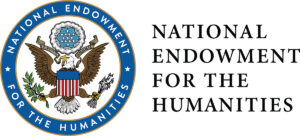Rayna Walters
Highville Charter School, New Haven
TEACHER'S SNAPSHOT
Subjects:
African Americans, Education, Individuals in History, Race, Slavery & Abolition, Social Justice, Voting & Suffrage
Course Topics/Big Ideas:
Cultural Diversity and an American National Identity, The Struggle for Freedom, Equality, and Social Justice
Town:
Middletown, New Haven
Grade:
Grade 8
Lesson Plan Notes
Amos Beman was a freeman born in 1812, at a time when slavery was still legal in Connecticut. He lived a life in service to abolishing slavery, advocating for the African American vote, organizing the African American community, and pushing for equality in Connecticut’s laws. Beman sought entrance into Wesleyan University but was denied because of his race. Undeterred, he audited classes through a Wesleyan student, who tutored him until threatened. Beman’s lifelong commitment to freedom took many forms: fighting for the African victims of the Amistad incident, as an abolitionist, suffragist, and community organizer. Despite discrimination and prejudice, Amos Beman was a powerful agent of change in 19th-century Connecticut.
ESSENTIAL QUESTION
SUPPORTING QUESTIONS
- What obstacles did Amos Beman confront?
- How did he respond to the oppression he and others faced?
- What strategies did he use?
- What role did community play in Amos Beman’s work?
ACTIVITY
1. Introduce the compelling and supporting questions and, individually or as a class, have students read the ConnecticutHistory.org article about Amos Beman. The article contains a copy of the letter addressed to Beman when he tried to study at Wesleyan. Discuss what the students notice and write down any questions.
2. Set the students to work in pairs or groups. Give each group access to all of the source material in the Toolkit above. Assign each group one resource to report to the class about, using the Library of Congress Primary Source Analysis Tool as a guide.
3. Have each group share their findings, thoughts, and questions.
4. Revisit the compelling and supporting questions raised at the beginning of the lesson.
5. Discuss current (or more recent) people who act as “agents of change” in our world, country, and community today.
OPPORTUNITIES FOR ASSESSMENT
- Students will research modern “agents of change,” individuals or organizations that have made a positive difference in the world. They will write a letter of recognition/thanks and plan a way to support this person/group’s efforts, such as a school drive, public awareness campaign, volunteering, etc.
- Students will research the current efforts to save and preserve the Amos Beman house at 97-99 Howe Street in New Haven. Some resources are provided below under “Articles to Read.” They will write letters to local legislators arguing why the building should be preserved.
RESOURCE TOOL KIT

“The Rev. Amos Beman’s Devotion to Education, Social Activism, and New Haven” by Elizabeth Correia.
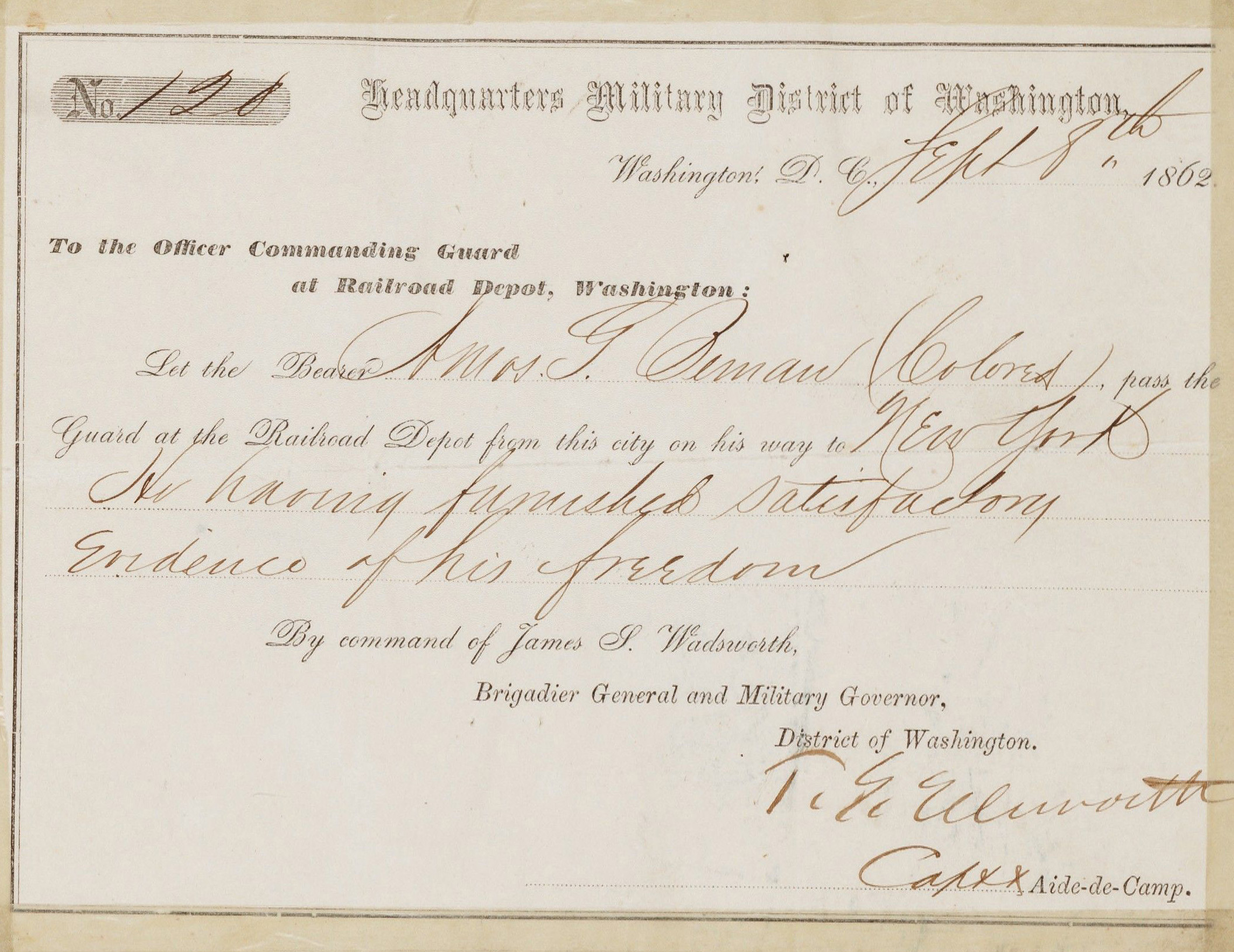
Railroad travel pass, 1862. Amos Gerry Beman Scrapbooks, Volume III, LS 1862 Sept 8 [image 208]. Beinecke Rare Book and Manuscript Library, Yale University.
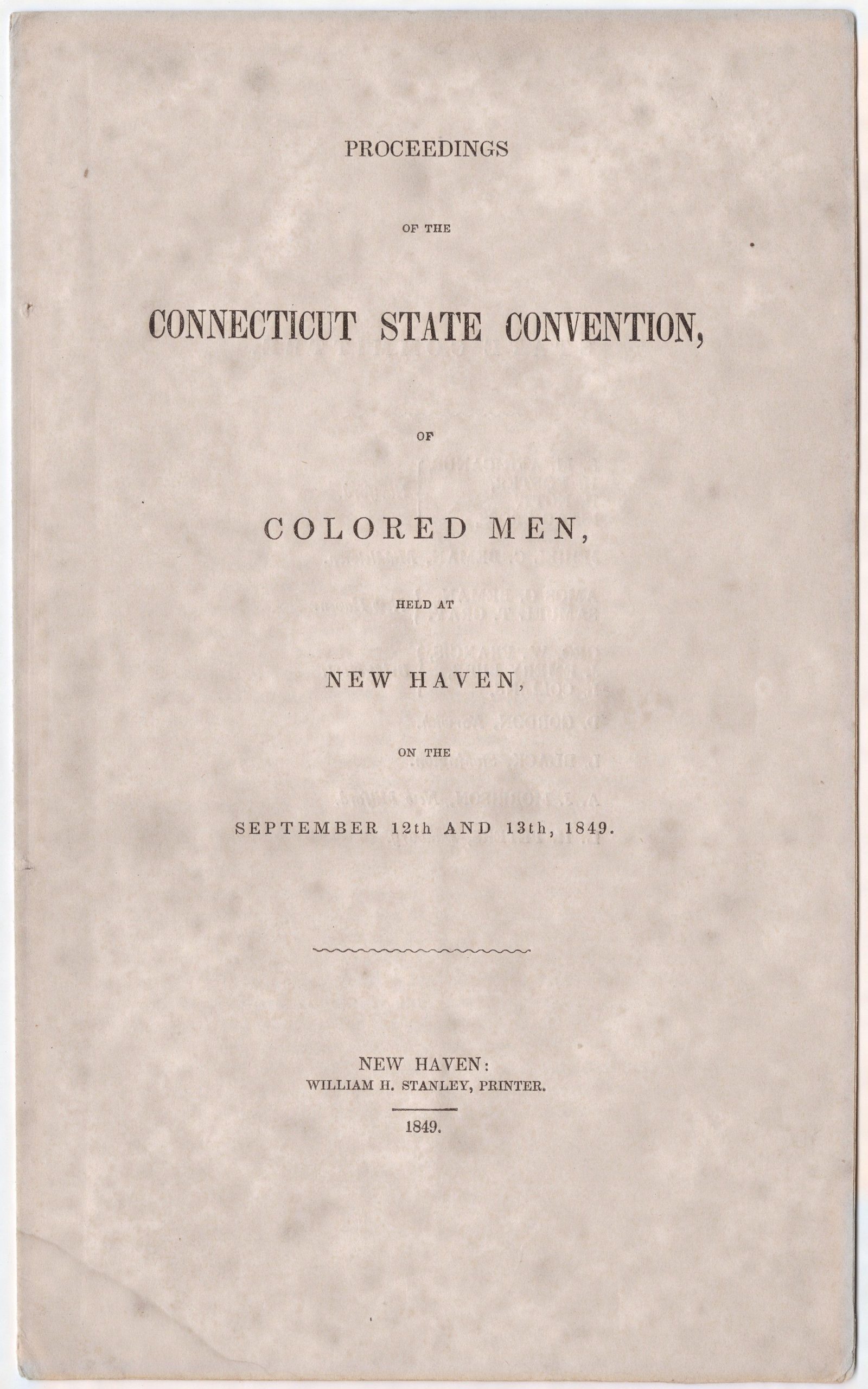
Proceedings of the Connecticut State Convention of Colored Men, Held at New Haven, On the September 12th and 13th, 1849. Pages 12-13. Courtesy University of Delaware Libraries, Museum and Press. View the full document.
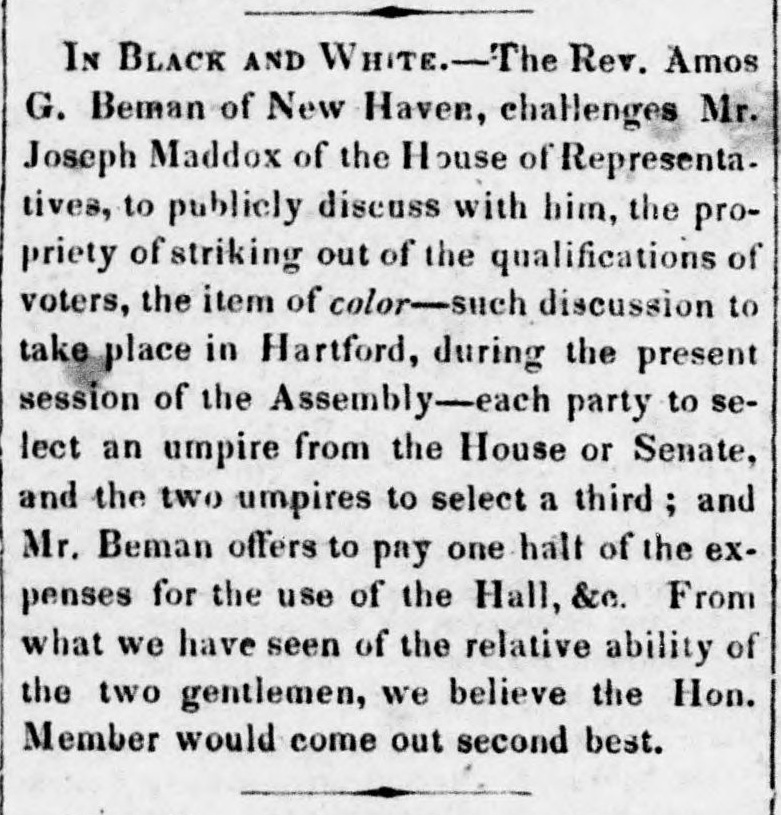
Litchfield Enquirer, June 14, 1855, page 2. Chronicling America: Historic American Newspapers. Library of Congress.
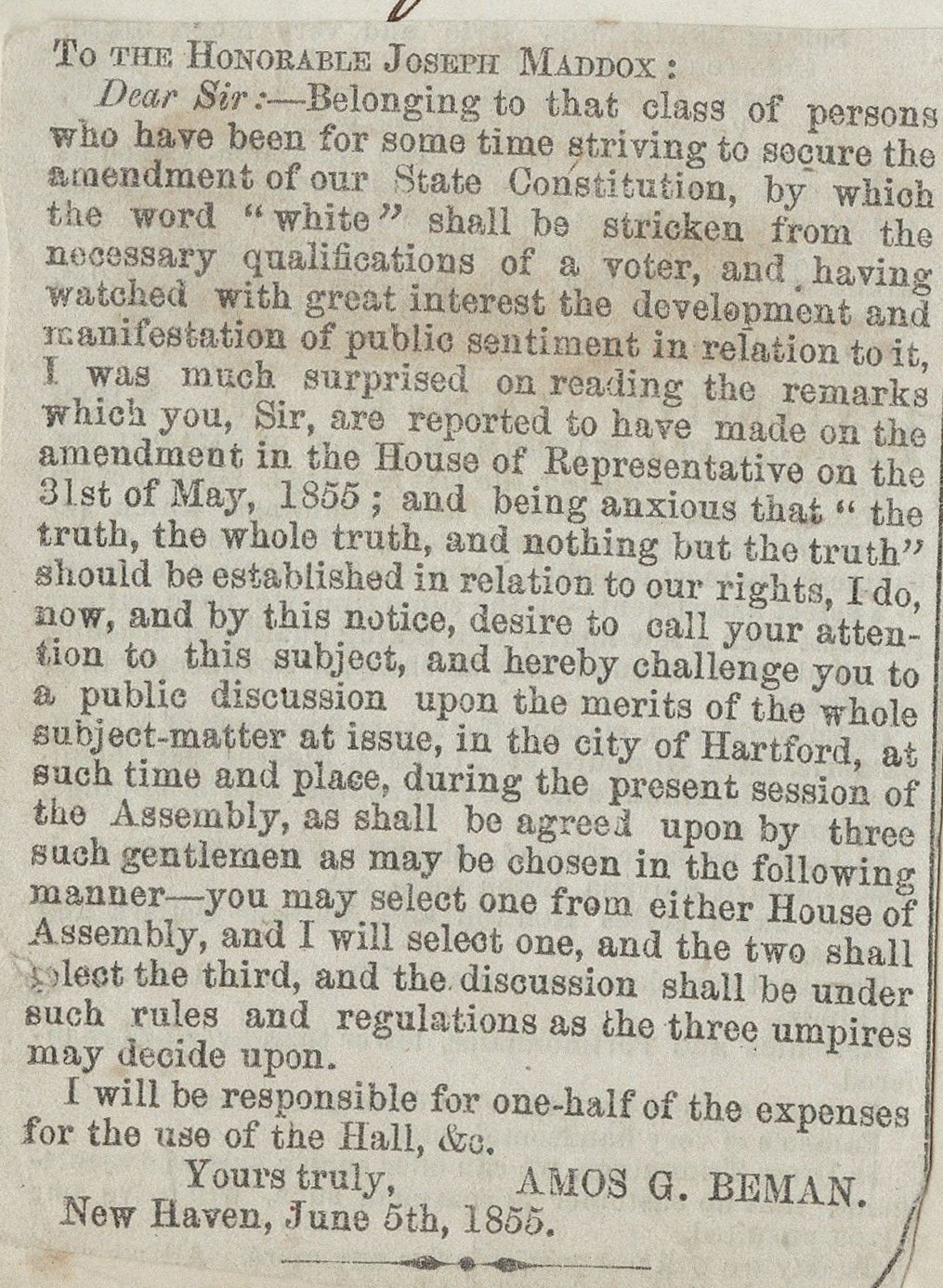
Letter to Joseph Maddox from Amos Beman, published June 5, 1855. Amos Gerry Beman Scrapbooks, Volume III, clippings and ms. notes [image 35]. Beinecke Rare Book and Manuscript Library, Yale University.
ADDITIONAL RESOURCES
Places to GO
Amos Beman House at 97-99 Howe Street, New Haven. Efforts are being made to save and preserve this historic site.
Things To DO
Watch this Yale Beinecke Library video about Amos Beman.
Websites to VISIT
Articles to READ
“Celebrating Black New Haven & Dixwell Congregational UCC History” October 17, 2022.
“A Family of Reformers: The Middletown Bemans” by Liz Warner. Connecticut Explored. Winter 2008/2009.
“New Haven group working to stop demolition of historic buildings” by Mary E. O’Leary. New Haven Register, June 13, 2019.
“Attorney general asked to stop demolition of New Haven buildings” by Mary E. O’Leary. CT Insider, July 14, 2019.


